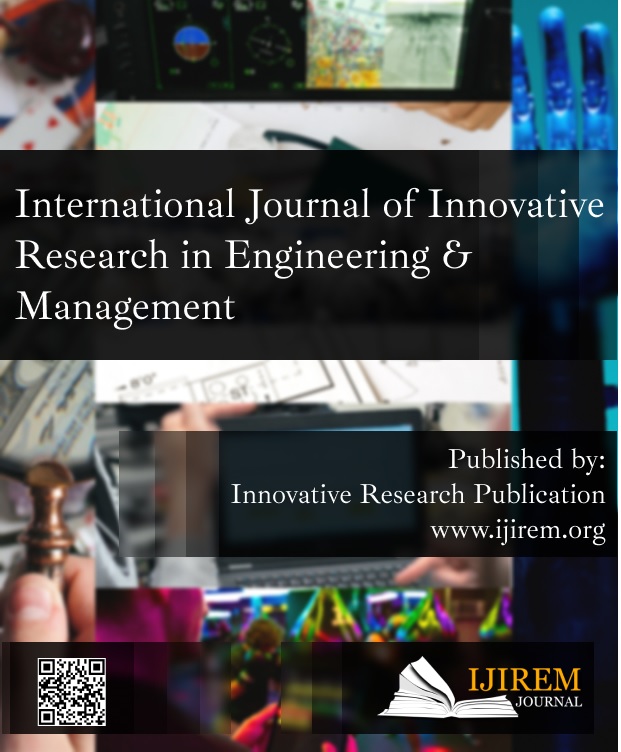Techno-Economic Analysis of a Grid-Connected Hybrid PV/Wind Power System- Case Study at Leh Ladakh in India
Keywords:
Hybrid, Technical, Economic, Photovoltaic, Wind, Net Present CostAbstract
The national grid is able to provide round the clock energy supply. Some region of India owing their geographical not able to get continuous power supply from the grid, one such location is Leh. The power delivered in that region is of very low quality, having frequent outage and the reliability of the supply becomes a challenge. During harsh environment the supply and reliability affected greatly due to the restricted movement of man and material. On the other hand, renewable energy supply being located on the site of installation can be able to eliminate such challenges. Hybrid combination of PV and Wind along with some storage facilities can mitigate the challenges. The storage battery increases the project cost and also releases pollutants during their operation. So the study uses the existing national grid to exchange the energy, the combination of PV-wind with the national grid. The study finds out the optimal size of such combination, focusing on the reliability and cost effective energy supply.
Downloads
References
Ekren O, Ekren BY, Ozerdem B. Break-even analysis and size optimization of a PV/wind hybrid energy conversion system with battery storage – A case study. Applied Energy 86 (2009) 1043– 1054.
Nandi SK, Ghosh HR. A wind–PV-battery hybrid power system at Sitakunda in Bangladesh. Energy Policy 37 (2009) 3659–3664.
Dali M, Belhadj J, Roboam X. Hybrid solar-wind system with battery storage operating in grid–connected and standalone mode:
Control and energy management- Experimental investigation. Energy 35 (2010) 2587-2595.
Kalantar M, Mousavi G. SM. Dynamic behavior of a stand alone hybrid power generation system of wind turbine, microturbine, solar array and battery storage. Applied Energy 87 (2010) 3051–3064.
Markvart T. Sizing of hybrid photovoltaic-wind energy systems. Solar Energy Vol. 51. No. 4. pp. 277-281, 1996. [6] Habib MA, Said SAM, El-Hadidy MA, Al-Zaharna I. Optimization procedure of a hybrid photovoltaic wind energy system. Energy 24 (1999) 919–929.
Hocaoglu FO, Gerek OZ, Kurban M. The effect of model generated solar radiation data usage in hybrid (wind–PV) sizing studies. Energy Conversion and Management 50 (2009) 2956– 2963.
Dihrab S, Sopian K. Electricity generation of hybrid PV/wind systems in Iraq. Renewable Energy 35 (2010) 1303–1307. [9] Panayiotou G, Kalogirou S, Tassou S. Design and simulation of a PV and a PV-Wind standalone energy system to power a household application. Renewable Energy 37 (2012) 355-363.
Ashok S. Optimised model for community-based hybrid energy system. Renewable Energy 2007;32:1155–64. [11] Cetin E, Yilanci A, Ozturk HK, Colak M, Kasikci I, Iplikci S. A micro-DC power distribution system for a residential application energized by photovoltaic–wind/fuel cell hybrid energy systems. Energy and Buildings 42 (2010) 1344–1352. [12] Eroglu M, Dursun E, Sevencan S, Song J, Yazici S, Kilic O. A mobile renewable house using PV/wind/fuel cell hybrid power
system. International journal of hydrogen energy 36 (2011) 7985- 7992
Okedu KE, Uhunmwangho R, Wopara P. Renewable Energy in Nigeria: The Challenges and Opportunities in Mountainous and Riverine Regions. International Journal of Renewable Energy Research (IJRER). 2015;5:222-9.
Salehin S, Rahman MM, Islam AS. Techno-economic Feasibility Study of a Solar PV-Diesel System for Applications in Northern Part of Bangladesh. International Journal of Renewable Energy Research (IJRER).
;5:1220-9.
Al-Masri H. M. and Ehsani M. (2019). Feasibility investigation of ahybrid on-grid wind photovoltaic retrofitting system—IEEE Conference Publication. Ieeexplore.ieee.org. Retrieved from https://ieeexplore.ieee.org/document/7356802
Akella AK, Saini RP, Sharma MP. Social, economical and environmental impacts of renewable energy systems. Renewable Energy 2009;34:390–6.
“Balance of system”, Solar energy technology programme, U.S.Department of energy. 5th January 2006 archived from the original on 4th May 2008.
Lambert T, Gilman P, Lilienthal P. Micropower system modeling with homer. Integration of alternative sources of energy. John Wiley & Sons, Inc.; 2006. P.379–418.
Bhattacharjee S., & Acharya S. (2015). PV–wind hybrid power option for a low wind topography. Energy Conversion and Management, 89, 942-954.
